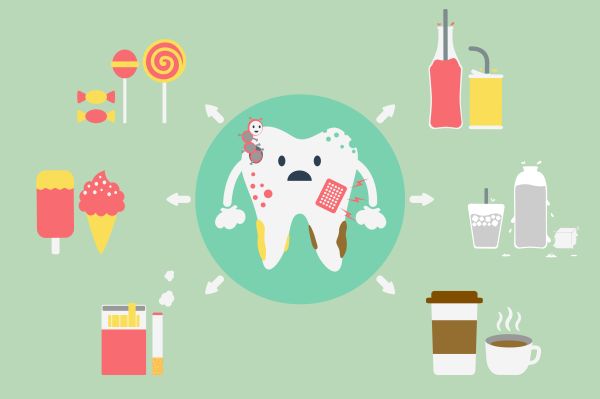Should I Get Dental Crowns or Veneers?

Dental crowns and veneers are popular treatment options for people who have cracked a tooth, want to make cosmetic changes to their teeth, or are looking to step up their smiles. Although both of these procedures can positively influence the appearance of a tooth, they are two different solutions that potential patients should weigh carefully.
Key differences between dental crowns and veneers
Dental crowns are used to cover an entire tooth. This means that every part of the tooth above the gum line is encased in porcelain, which helps strengthen the tooth and improve its appearance.
Like the name would suggest, veneers only cover the front side of a tooth. This porcelain front allows for changes in the color and shape of the tooth.
When deciding whether to opt for dental crowns or veneers, there are a few key factors to keep in mind:
The health of the teeth
Veneers are typically placed on teeth that are healthy and strong. Porcelain veneers tend to be weak and do not strengthen or otherwise alter the integrity of a tooth. Patients who have generally healthy teeth who are seeking a change in color, shape or alignment should consider porcelain veneers.
Crowns, on the other hand, are helpful for protecting teeth that are cracked or otherwise damaged. While crowns can still adjust the shape and color of a tooth, they are also able to strengthen and rebuild teeth that are severely decayed or broken. If a tooth is unhealthy, a crown is a better solution than a veneer.
The purpose of the procedure
Patients should consider the purpose for which they are considering either procedure, as well as the health of their teeth when making a decision between dental crowns and veneers.
For teeth that are pretty strong and only require slight cosmetic changes, veneers are probably best. Veneers are a good solution for issues that are strictly aesthetic in nature.
For broken teeth that need support or restoration, crowns are a better option. A dental crown will not only improve the way a tooth looks, but it will also rebuild the structure of a tooth and allow patients to use the tooth the way they would naturally.
If there are no underlying issues or problems with a patient’s teeth, veneers are a good treatment option. However, if a tooth is in desperate need of repair or protection, patients should choose a dental crown.
The amount of tooth reduction
Veneers require less tooth reduction than dental crowns. In fact, in some situations, no trimming is needed at all. Patients who have minor cosmetic issues to fix should probably opt for a procedure that does not require much tooth reduction.
According to Hawthorne East Dental, placing a crown requires anywhere from 63% to 76% of the tooth to be trimmed. If a tooth is severely damaged, this tooth reduction can help protect the healthy parts of the tooth that remain. However, this is not ideal if the tooth is relatively healthy.
Choosing the right dental procedure
In order to choose the dental procedure that will work best for their own unique needs, patients should consider the purpose of the procedure, the health of their teeth, and the amount of enamel trimming that will be involved.
A dentist can help provide more information and make sure patients understand the difference between veneers and dental crowns before they make a decision.
Request an appointment here: http://www.hendersonfamilydentistry.com or call Henderson Family Dentistry at (903) 657-3139 for an appointment in our Henderson office.
Check out what others are saying about our services on Google: Read our Yelp reviews.
Related Posts
Most people find root canal treatment frightening. This procedure has a bad reputation for being painful and unpleasant. But your dentist has the skills and instruments necessary to handle the process efficiently and with minimal pain. There is a possibility that a patient may have numerous teeth that require extensive treatment. The dentist can assess…
A dental crown protects a damaged tooth and restores shape, strength, and appearance. Crowns cover the entire visible portion, shielding cracks, large fillings, and worn enamel while improving function. Dentists use crowns to rebuild biting surfaces, anchor bridges, and finish implants. This guide explains when crowns are a suitable option, material choices, treatment steps, costs,…
A root canal treatment is an optimal way to restore your tooth. It is also an effective way to protect your tooth. Dental damage can result from an injury or decay. Tooth extraction is an easy solution but keeping your natural tooth structure is healthier. If you want to know how a root canal treatment…
Dental implants can replace missing teeth, restore chewing strength, and provide support for a natural-looking smile. For optimal results, an endodontist or root canal specialist can carefully plan and place implants. After all, successful treatment outcomes begin with clear education about what to expect at every step, as well as proper care and maintenance afterward.…
